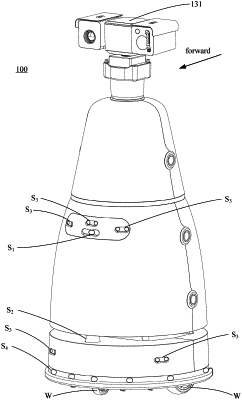| CPC G05D 1/0214 (2013.01) [G05D 1/0223 (2013.01); G05D 1/0238 (2013.01); G05D 1/0257 (2013.01)] | 20 Claims |

|
1. A method for a mobile machine to avoid collision with an object, wherein the mobile machine has a plurality of sensors, and the method comprises:
at one or more processors of the mobile machine,
fusing sensor data received from the plurality of sensors to obtain a plurality of data points corresponding to the object;
calculating a closed-form solution of a distance between the mobile machine and each of the plurality of data points;
calculating a maximum allowed velocity of the mobile machine based on the shortest distance between the mobile machine and the plurality of data points and a current velocity of the mobile machine; and
controlling the mobile machine to move according to the maximum allowed velocity;
wherein one of the plurality of sensors is a depth camera; and
the fusing sensor data received from the plurality of sensors to obtain the plurality of data points corresponding to the object comprises:
segmenting the sensor data received from the depth camera to obtain segmented sensor data corresponding to the object;
estimating a velocity of the object based on the segmented sensor data, and predicting a trajectory of the object based on the velocity;
fusing the segmented sensor data and the sensor data received from the other of the plurality of sensors to obtain the plurality of data points corresponding to the object; and
adding a closest point in the predicted trajectory to the plurality of data points.
|